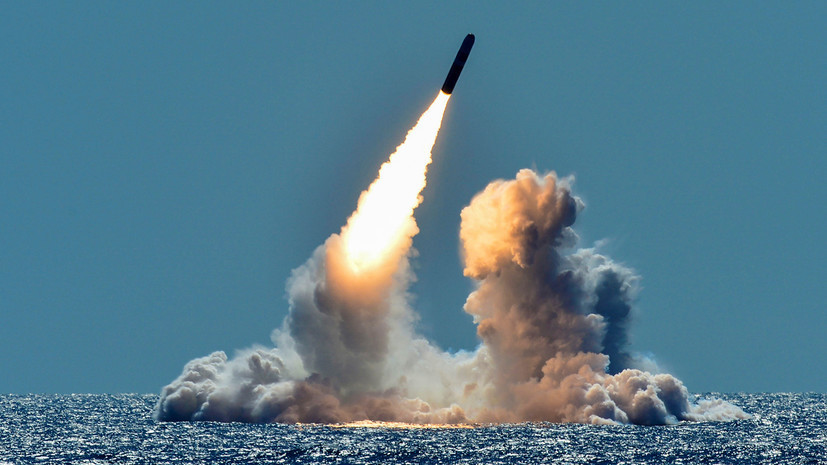A factor in the destabilization of the global nuclear deterrent system is the deployment by Washington of low-yield nuclear warheads, not Moscow's actions.
This opinion was expressed in an interview with RIA Novosti by the Russian Ambassador to the United States Anatoly Antonov.
This is how the diplomat commented on the statements of the US Deputy Assistant Secretary of Defense Robert Sufer, who earlier spoke about the modernization of the American nuclear forces.
According to Sufer, the United States began this work after Russia allegedly launched a similar program.
As Antonov pointed out, the US military is using accusatory tactics to justify Washington's policy of lowering the threshold for the use of nuclear weapons.
In particular, in 2019, the United States deployed W76-2 low-yield warheads on Trident II ballistic missiles, the ambassador recalled.
“Strategic carriers in such equipment become, in fact, the weapon of the battlefield.
It is these practical steps, and not the intentions attributed to Russia, that have a significant destabilizing effect on nuclear deterrence, ”the diplomat emphasized.
Antonov noted that the representative of the American defense department reiterated the "far-fetched American thesis" about the development by Russia of the doctrine of "escalation for de-escalation" and allegedly Moscow's buildup of the arsenal of non-strategic nuclear weapons.
In this regard, the ambassador proposed to the American side to familiarize themselves with the document "State foundations of the Russian Federation in the field of nuclear deterrence" published in June.
“The document confirms that our nuclear policy is purely defensive in nature.
And also the conditions for a possible transition to the use of nuclear weapons are clearly spelled out, ”Antonov said.
Recall that the decree, which approves the foundations of state policy in the field of nuclear deterrence, was signed by Vladimir Putin on June 2, 2020.
In particular, the document states that Russia considers nuclear weapons "exclusively as a deterrent, the use of which is an extreme forced measure."
At the same time, it is prescribed that the country's authorities are making every necessary effort to reduce the nuclear threat and prevent the aggravation of interstate relations.
"Nuclear deterrence is aimed at ensuring that the potential adversary understands the inevitability of retaliation in the event of aggression against the Russian Federation and (or) its allies," the decree says.
The document also lists four conditions that determine the possibility of Russia's use of nuclear weapons.
We are talking about the receipt of reliable information about the launch of ballistic missiles attacking the territory of the Russian Federation and (or) its allies, about the use of nuclear weapons or other types of WMD by the enemy in the territories of the Russian Federation and (or) its allies, about the enemy's influence on critically important state or military objects of Russia, the decommissioning of which will lead to the disruption of the response actions of nuclear forces, or about aggression against the Russian Federation with the use of conventional weapons, when the very existence of the state is threatened.
The decision to use nuclear weapons is made by the President, at the same time the Russian leader can, if necessary, inform the military-political leadership of other countries or international organizations about this.
US position
In February 2020, the US Department of Defense announced that the latest W76-2 low-power nuclear warheads were on alert.
To justify this step, the American side cites the Nuclear Posture Review (NPR), which defines the long-term US strategy in the field of nuclear weapons, in which Russia is listed as a "potential adversary."
In April, the website of the State Department published material on the creation of low-yield nuclear warheads W76-2 and equipping them with part of the ballistic missiles of the Trident 2 submarines.
Maria Zakharova, the official representative of the Russian Foreign Ministry, drew attention to this circumstance.
She pointed out that the United States is thus trying to blur the line between non-strategic and strategic nuclear weapons.
Zakharova recalled that the Russian side considers such a step to be an element of destabilization.
"The need to develop and deploy low-yield nuclear weapons is presented as a reaction of the United States to" increasing global threats ", primarily" building up the nuclear potential of Russia and China, "the diplomat said.
According to her, the demonstrated position leads to a lowering of the threshold for the use of nuclear weapons, which means an increase in the threat of a nuclear conflict.

